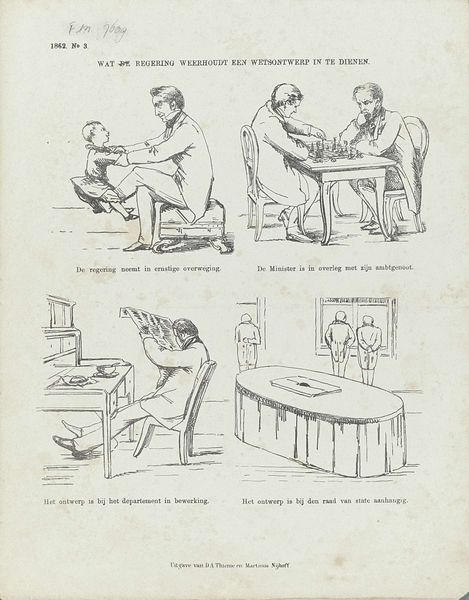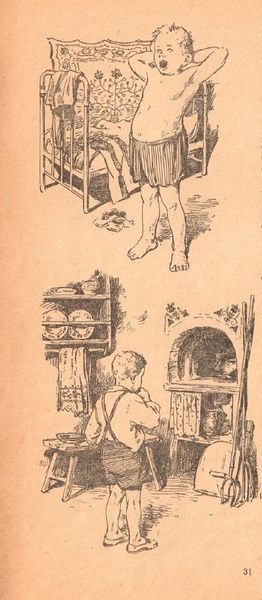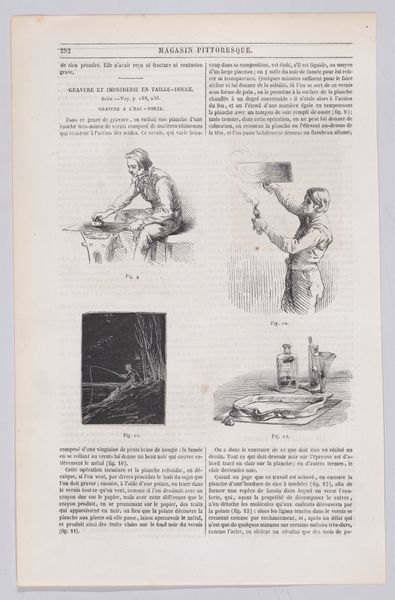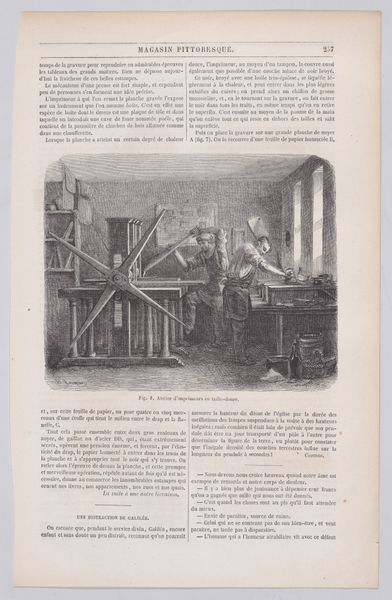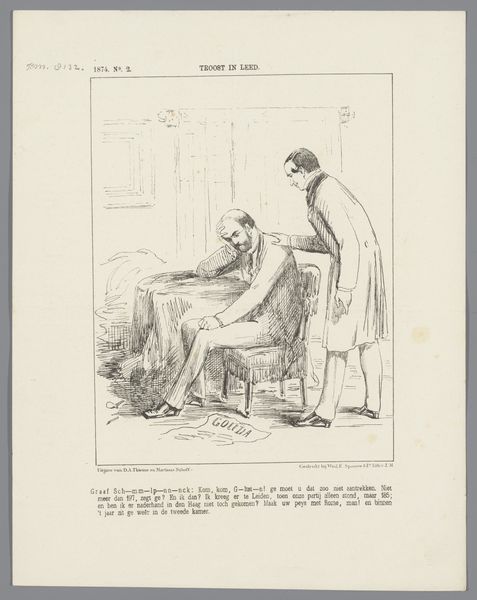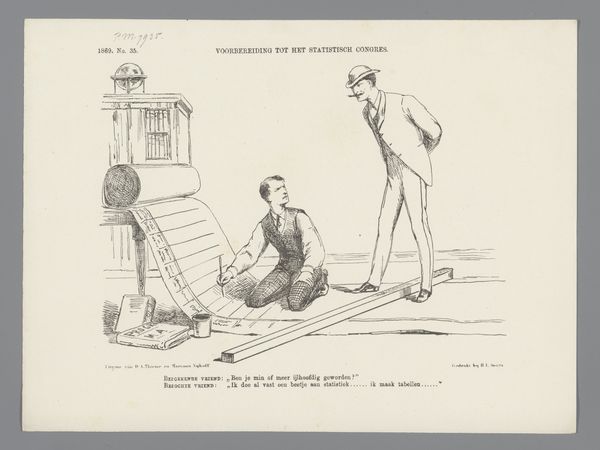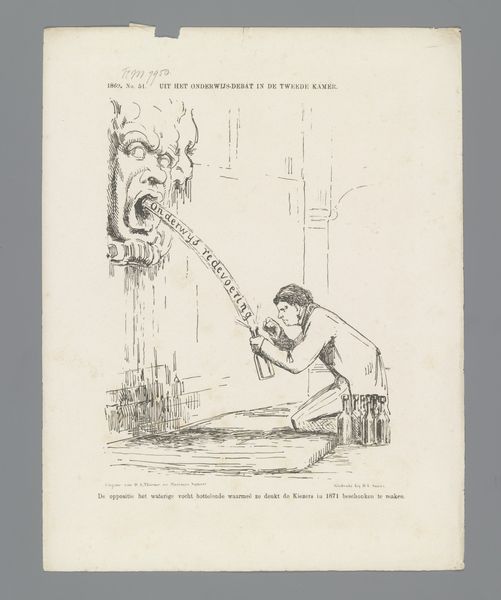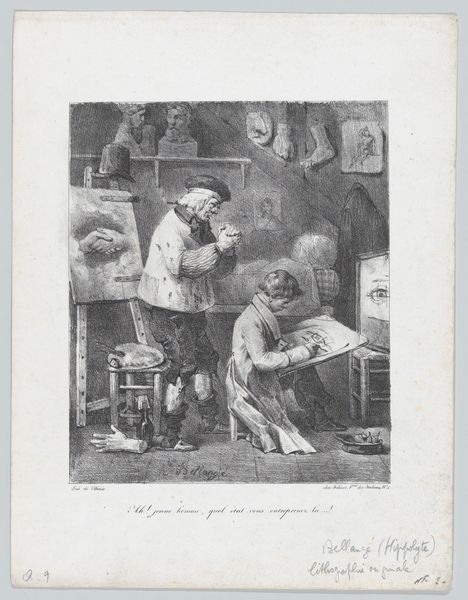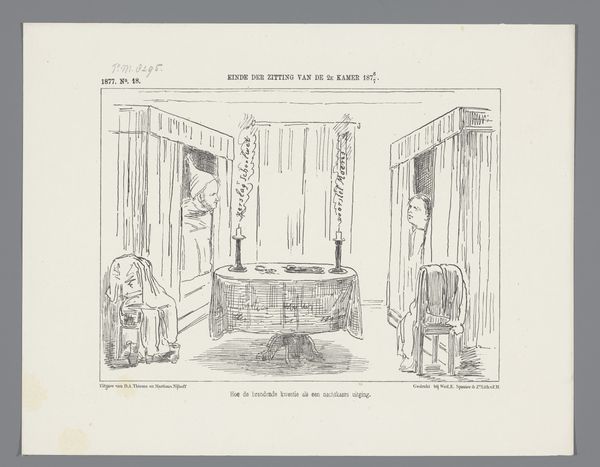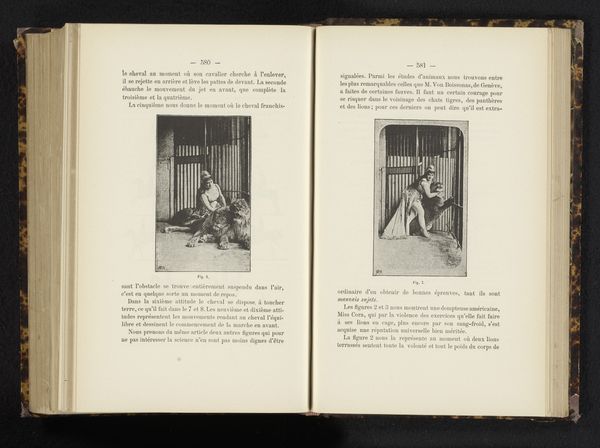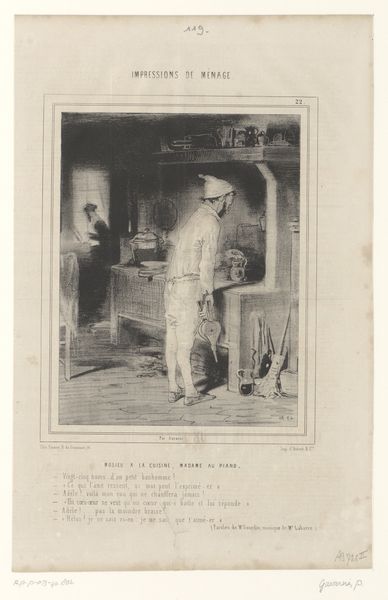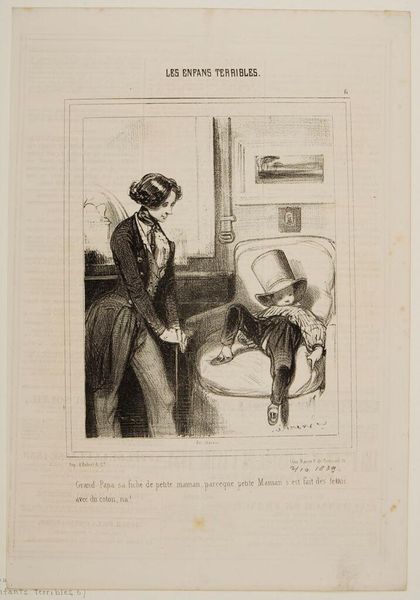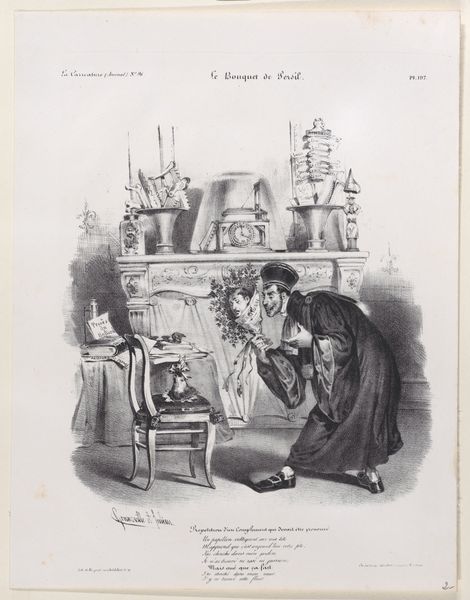
Engraving and Intaglio Printing, from "Le Magasin Pittoresque" 1852
0:00
0:00
graphic-art, print, intaglio, engraving
#
graphic-art
# print
#
intaglio
#
history-painting
#
engraving
Dimensions: Sheet: 11 5/8 × 7 1/2 in. (29.6 × 19 cm)
Copyright: Public Domain
Editor: This is "Engraving and Intaglio Printing, from 'Le Magasin Pittoresque,'" created in 1852 by Charles Jacque. It's a print showing different stages of intaglio, and there's something compelling about seeing the process so clearly laid out. What do you see in this piece? Curator: Immediately, I’m drawn to the depiction of labor, to the material realities of printmaking in the mid-19th century. This isn't just an image; it’s a diagram of production. Look at the textures carefully rendered—the wood of the press, the surfaces the figures are touching. It brings forward a crucial idea of who is doing the work and who is producing for what sort of audience. Think about mass production beginning in the 19th Century: who owned the printing press? Editor: So, the image becomes a document about both the art and the industry surrounding it? The means by which this very image could be reproduced for a wider audience? Curator: Precisely. It foregrounds the physical process, the hands-on manipulation of materials – plate, ink, paper. Each stage reveals not only a technique but also a level of skill, and the human energy expended. The division of labor and expertise are key. What does intaglio printing afford the masses versus paintings only afforded by elites? Editor: That's fascinating, I hadn't considered how the image itself is also an artifact of this very process it illustrates! Curator: It encourages us to consider the economic and social contexts of art making, even challenges conventional boundaries between artistic and manufacturing labor. Editor: I learned how even what might seem like just a functional depiction of process can have much larger implications when considering who is holding the tools, the labor behind the art, and for whom that art is ultimately being made. Curator: Yes, it underscores how the choices in materials, processes, and representations ultimately affect our interpretation of this work.
Comments
No comments
Be the first to comment and join the conversation on the ultimate creative platform.
